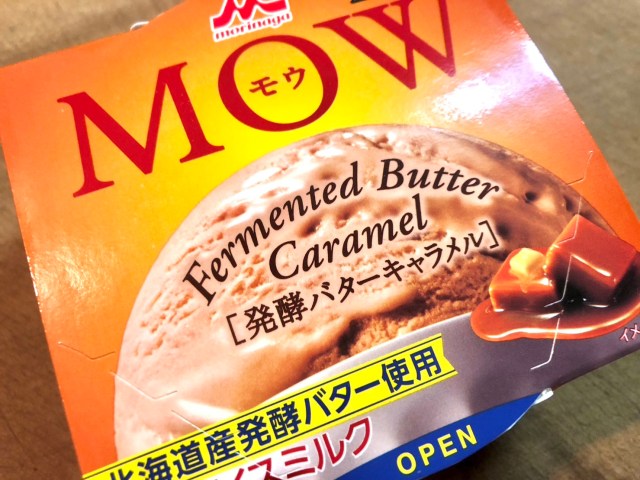
Sometimes we just don’t know when to quit in the name of strange cooking experiments.
Earlier this fall, we tested out Japanese food company Meiji’s recipe for matcha ice cream takikomigohan, which is a seasoned rice cooked with a variety of ingredients (usually sans ice cream) that can be easily prepared inside of a rice cooker. Despite our initial misgivings due to the ghastly combination of ingredients swimming around the rice cooker, the end result tasted surprisingly delicious, like a kind of smooth, creamy pilaf.
▼ The ingredients that went into matcha ice cream rice (prior to cooking)
Always the intrepid writers that we are, we couldn’t help but wonder–was it something about the recipe being matcha ice cream that ensured its success, or would any ice cream flavor be interchangeable? There was only one way to find out.
We felt obligated to start the experimenting with the most basic of all beloved ice cream flavors: vanilla.
We threw the seasonings and the ice cream into the cooker. It had a decidedly unappetizing look, just like the first time we did it with matcha ice cream.
After one hour of cooking, the resulting rice didn’t look all that different than normal, but it did have an interesting yellowish sheen. Its smell was honestly the most surprising part, as a sickly sweet vanilla aroma wafted up through the steam. The degree of sweetness was much stronger than with the matcha ice cream, so it was also harder to bridge the gap between the sight of rice and the smell of vanilla.
We steeled ourselves up to take a bite…and were pleasantly surprised. It wasn’t bad at all. In fact, the sweetness of the smell wasn’t mirrored at all in the taste. If anything, the combination of the other seasonings led to a salty-sweet sensation. The bottom line is that as long as you can get past the smell, the vanilla ice cream takikomigohan is another solid pairing.
We do have one big caveat, though. There was a pretty drastic difference between the freshly cooked vanilla ice cream rice and the same rice when heated up as leftovers the next day. We don’t have a scientific explanation for it, but the vanilla flavor definitely packed a stronger punch as more time went by. After eating about two cups of it, we felt like we had eaten nothing other than vanilla-flavored rice. That hadn’t been the case at all with leftovers of the matcha ice cream rice.
After those mixed results, we wanted to test one more flavor of ice cream takikomigohan: fermented butter caramel ice cream.
As the ice cream itself was a light brownish color, it made sense that the cooked rice would also have a deeper color than the vanilla batch. In fact, it almost looked like rice mixed lightly with soy sauce. But the more pressing concern was the blast of sickly sweet caramel flavor that engulfed us upon opening the lid. It smelled like we had been melting caramel–not cooking rice.
We felt a little apprehensive to take a bite…but this one also turned out to be not that bad. It didn’t taste nearly as sweet as it smelled. The main difference from the first round was the swapping of vanilla and caramel flavors.
Unfortunately we ended up eating all of the caramel takikomigohan right after it was made, so we didn’t get to test it again on the next day. Instead, there’s one important piece of info that we’d like to share.
The next day we made a batch of regular rice in the same rice cooker. The moment we opened the lid…
▼ Huh? What’s that smell…?
…there was still the lingering smell of caramel! Thankfully, it didn’t affect the taste of the rice at all. The smell didn’t go away until about three uses of the rice cooker after that.
All in all, the matcha takikomigohan is still the clear winner in terms of both taste and smell as well as longevity. However, on the bright side, the vanilla and caramel ice cream rice versions were still light years ahead of the concoction we made that one time in a rice cooker with beer and potato chips. We don’t expect anything will ever topple that.
All images © SoraNews24
● Want to hear about SoraNews24’s latest articles as soon as they’re published? Follow us on Facebook and Twitter!
[ Read in Japanese ]

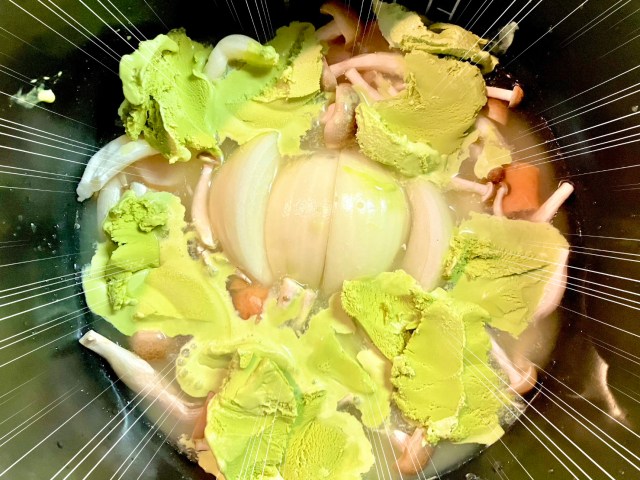
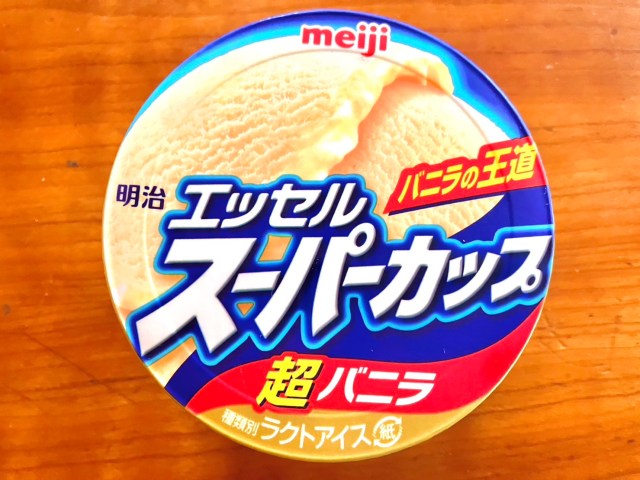
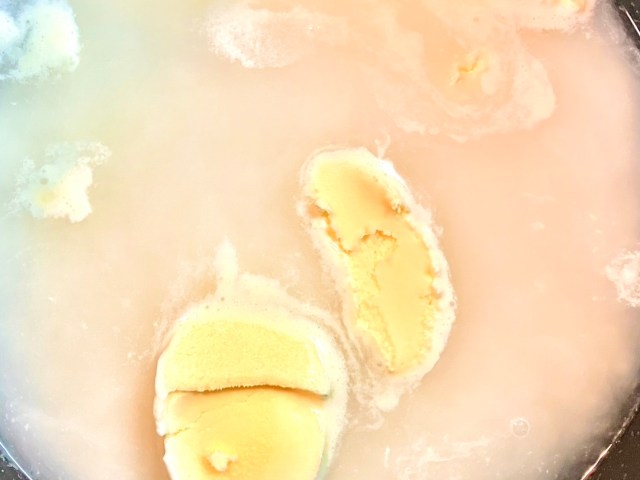
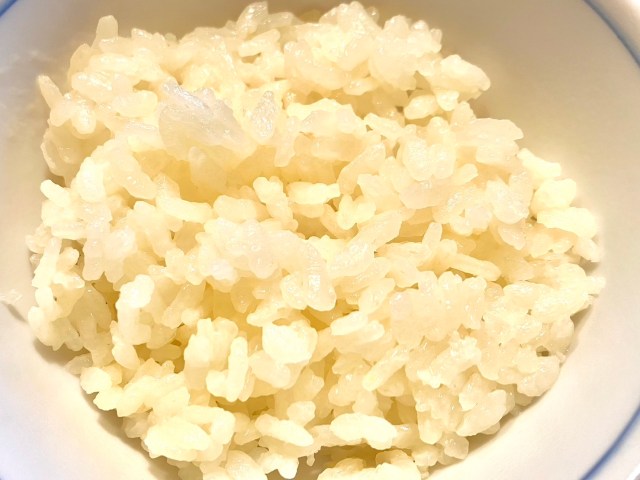
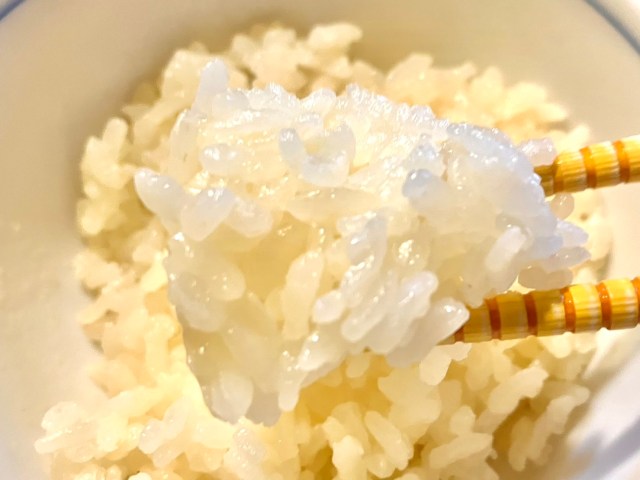
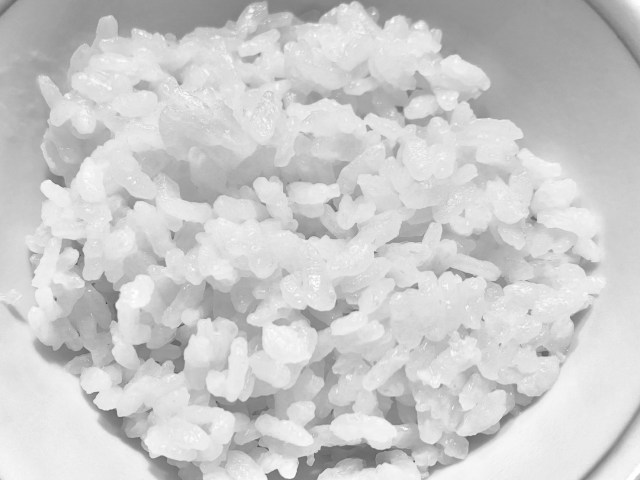
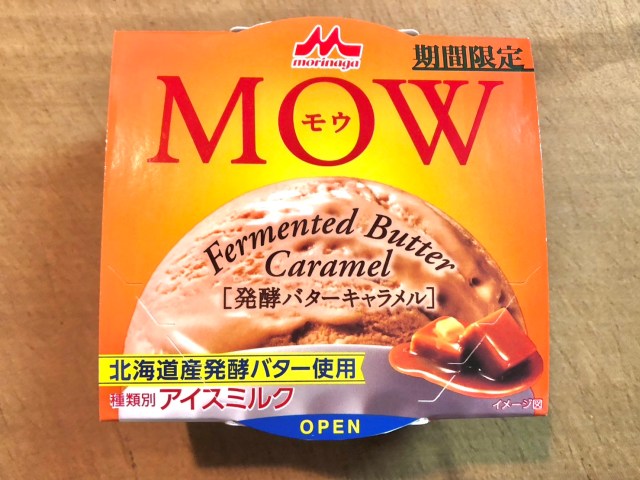
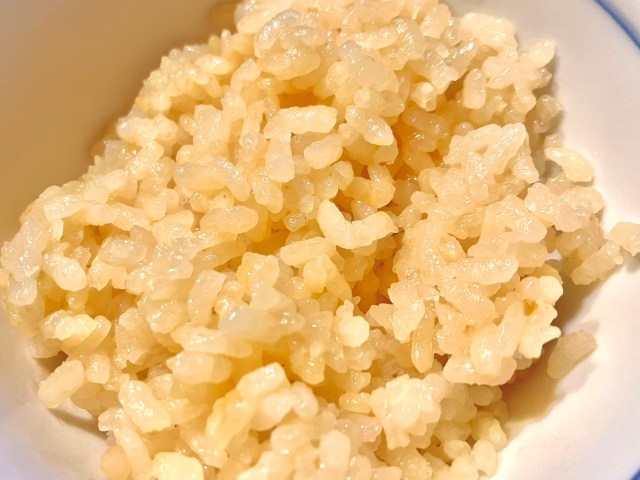

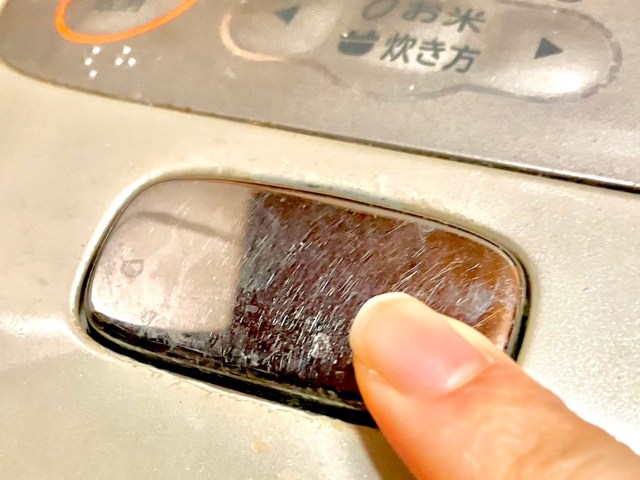
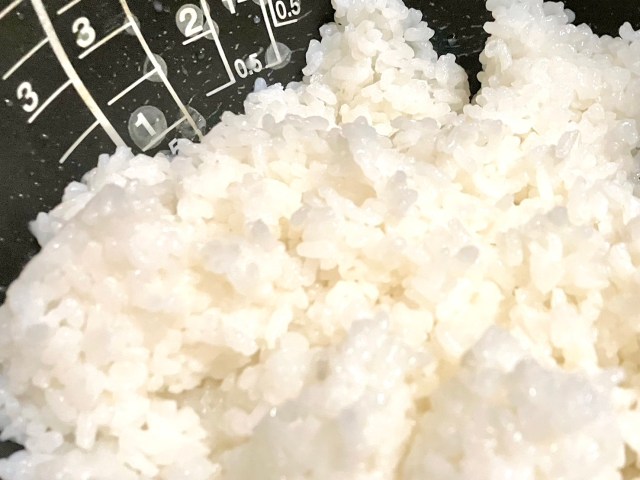
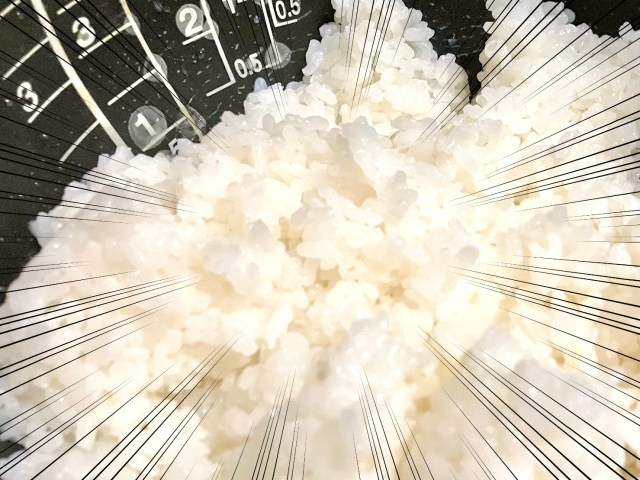
 We dig into Japanese ice cream flavored with iron metal and are wowed by the result【Taste Test】
We dig into Japanese ice cream flavored with iron metal and are wowed by the result【Taste Test】 Lightly-salted, potato-cracker-flavored ice cream now on sale nationwide
Lightly-salted, potato-cracker-flavored ice cream now on sale nationwide Michelin-approved Japanese chef teaches us two gourmet-standard dishes using ice cream and toast
Michelin-approved Japanese chef teaches us two gourmet-standard dishes using ice cream and toast Starbucks’ brand-new Meccha Matcha Frappuccino: 20 years in the making, 50 percent more green tea
Starbucks’ brand-new Meccha Matcha Frappuccino: 20 years in the making, 50 percent more green tea We try ice cream with a topping of natto fermented soybeans, because the Internet told us to
We try ice cream with a topping of natto fermented soybeans, because the Internet told us to Japan’s new difficult-to-drink-from beer glass protects your liver, but it’s a brutal experience
Japan’s new difficult-to-drink-from beer glass protects your liver, but it’s a brutal experience Demon Slayer: Kimetsu no Yaiba gets new roller coaster attractions and food at Universal Studios Japan
Demon Slayer: Kimetsu no Yaiba gets new roller coaster attractions and food at Universal Studios Japan How to order snacks on a Shinkansen bullet train in Japan
How to order snacks on a Shinkansen bullet train in Japan Burger King Japan suddenly adds Dr. Pepper and Dr. Pepper floats to its menu nationwide
Burger King Japan suddenly adds Dr. Pepper and Dr. Pepper floats to its menu nationwide New Pokémon ice cream, dessert drinks, and cool merch coming to Baskin-Robbins Japan【Pics】
New Pokémon ice cream, dessert drinks, and cool merch coming to Baskin-Robbins Japan【Pics】 Caffeinated ramen for gamers that you can eat with one hand going on sale in Japan
Caffeinated ramen for gamers that you can eat with one hand going on sale in Japan New samurai glasses are Japan’s latest weird must-have souvenir
New samurai glasses are Japan’s latest weird must-have souvenir McDonald’s adds new watermelon frappe and fruity macaron to its menu in Japan
McDonald’s adds new watermelon frappe and fruity macaron to its menu in Japan Princesses, fruits, and blacksmiths: Study reveals the 30 most unusual family names in Japan
Princesses, fruits, and blacksmiths: Study reveals the 30 most unusual family names in Japan We check out the local flavors of the commonly confused Ome and Aomi areas of Tokyo in one day
We check out the local flavors of the commonly confused Ome and Aomi areas of Tokyo in one day Nintendo history you can feel – Super NES, N64, and GameCube controllers become capsule toys
Nintendo history you can feel – Super NES, N64, and GameCube controllers become capsule toys Hello, cosmetics! Clinique teams up with Hello Kitty this summer for first-time collaboration
Hello, cosmetics! Clinique teams up with Hello Kitty this summer for first-time collaboration “The most Delicious Cup Noodle in history” – Japan’s French Cup Noodle wins our heart【Taste test】
“The most Delicious Cup Noodle in history” – Japan’s French Cup Noodle wins our heart【Taste test】 Starbucks releases a cute Frappuccino and Unicorn Cake…but not in Japan
Starbucks releases a cute Frappuccino and Unicorn Cake…but not in Japan Kyoto Tower mascot termination reveals dark side behind cute Japanese characters
Kyoto Tower mascot termination reveals dark side behind cute Japanese characters McDonald’s Japan’s Soft Twist Tower: A phantom ice cream only sold at select branches
McDonald’s Japan’s Soft Twist Tower: A phantom ice cream only sold at select branches Yabai Ramen: What makes this Japanese ramen so dangerous?
Yabai Ramen: What makes this Japanese ramen so dangerous? Finally! Nintendo Japan expands Switch 8-bit controller sales to everybody, Online member or not
Finally! Nintendo Japan expands Switch 8-bit controller sales to everybody, Online member or not Japanese government wants to build luxury resorts in all national parks for foreign tourists
Japanese government wants to build luxury resorts in all national parks for foreign tourists To combat declining birth rate, Japan to begin offering “Breeding Visas” to foreigners
To combat declining birth rate, Japan to begin offering “Breeding Visas” to foreigners 10 things you should buy at 7-Eleven in Japan
10 things you should buy at 7-Eleven in Japan Studio Ghibli releases anime heroine cosplay dresses that are super comfy to wear
Studio Ghibli releases anime heroine cosplay dresses that are super comfy to wear Woman charged for driving suitcase without a license in Osaka
Woman charged for driving suitcase without a license in Osaka Studio Ghibli unveils My Neighbour Totoro miniature house model
Studio Ghibli unveils My Neighbour Totoro miniature house model Kyoto experiencing problems with foreign tourists not paying for bus fares, but not on purpose
Kyoto experiencing problems with foreign tourists not paying for bus fares, but not on purpose Fighting mild hunger with a Japanese soda that turns into jelly in the stomach【Taste test】
Fighting mild hunger with a Japanese soda that turns into jelly in the stomach【Taste test】 Studio Ghibli’s Howl’s Moving Castle tapestry unveiled in Japan for first time
Studio Ghibli’s Howl’s Moving Castle tapestry unveiled in Japan for first time McDonald’s new Happy Meals offer up cute and practical Sanrio lifestyle goods
McDonald’s new Happy Meals offer up cute and practical Sanrio lifestyle goods Sales of Japan’s most convenient train ticket/shopping payment cards suspended indefinitely
Sales of Japan’s most convenient train ticket/shopping payment cards suspended indefinitely Sold-out Studio Ghibli desktop humidifiers are back so Totoro can help you through the dry season
Sold-out Studio Ghibli desktop humidifiers are back so Totoro can help you through the dry season Japanese government to make first change to romanization spelling rules since the 1950s
Japanese government to make first change to romanization spelling rules since the 1950s Foreigner’s request for help in Tokyo makes us sad for the state of society
Foreigner’s request for help in Tokyo makes us sad for the state of society Ghibli founders Toshio Suzuki and Hayao Miyazaki contribute to Japanese whisky Totoro label design
Ghibli founders Toshio Suzuki and Hayao Miyazaki contribute to Japanese whisky Totoro label design Doraemon found buried at sea as scene from 1993 anime becomes real life【Photos】
Doraemon found buried at sea as scene from 1993 anime becomes real life【Photos】 Tokyo’s most famous Starbucks is closed
Tokyo’s most famous Starbucks is closed Japanese survey reveals the top 10 most popular ice creams in Japan
Japanese survey reveals the top 10 most popular ice creams in Japan Häagen-Dazs Japan tells us to put ice cream on our avocado toast — Were we wrong to listen?
Häagen-Dazs Japan tells us to put ice cream on our avocado toast — Were we wrong to listen? We try making red-bean rice using an ice cream bar【SoraKitchen】
We try making red-bean rice using an ice cream bar【SoraKitchen】 Japan’s new Ice Cream Fondue Pizza promises the great taste of ice cream and mushrooms together!
Japan’s new Ice Cream Fondue Pizza promises the great taste of ice cream and mushrooms together! Häagen-Dazs Japan’s Yuzu Green Tea Float — How to make the super-easy matcha summer dessert drink
Häagen-Dazs Japan’s Yuzu Green Tea Float — How to make the super-easy matcha summer dessert drink Fun with Kaki No Tane rice cracker ice cream sandwiches【Taste test】
Fun with Kaki No Tane rice cracker ice cream sandwiches【Taste test】  Häagen-Dazs Japan recommends ice cream with tomato and avocado, so we trust them and try it
Häagen-Dazs Japan recommends ice cream with tomato and avocado, so we trust them and try it We made bread out of ice cream and it’s delicious! Super simple 3 ingredient recipe
We made bread out of ice cream and it’s delicious! Super simple 3 ingredient recipe We turn Japanese soymilk into a refreshing summer treat in just two steps【SoraKitchen】
We turn Japanese soymilk into a refreshing summer treat in just two steps【SoraKitchen】 New Häagen-Dazs ice cream: Salty Vanilla and Caramel and Japonais Black Syrup Kinako Red Bean
New Häagen-Dazs ice cream: Salty Vanilla and Caramel and Japonais Black Syrup Kinako Red Bean Official Sailor Jupiter bento boxed lunches being served now at Tokyo anime-themed cafe 【Photos】
Official Sailor Jupiter bento boxed lunches being served now at Tokyo anime-themed cafe 【Photos】 Mitsuimo tart “caramelized sweet potato tart” ice cream hits the shelves at Lawson convenience stores
Mitsuimo tart “caramelized sweet potato tart” ice cream hits the shelves at Lawson convenience stores We try a method for making ice cream that doesn’t require a freezer【SoraKitchen】
We try a method for making ice cream that doesn’t require a freezer【SoraKitchen】 Sakura-flavored ice cream returns to Baskin Robbins in Japan after 24 years!
Sakura-flavored ice cream returns to Baskin Robbins in Japan after 24 years! Denny’s Japan teams up with Paris patissier for premium-price 50th anniversary sweets【Taste test】
Denny’s Japan teams up with Paris patissier for premium-price 50th anniversary sweets【Taste test】
Leave a Reply